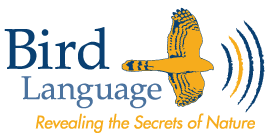“I speak English, Spanish, and Bird Language.”
– Preschool participant at Stretch the Imagination
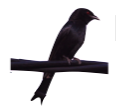 For the past six years, our friends at Stretch the Imagination Preschool in San Francisco have been bringing nature into the preschool experience, by bringing early learners outside to engage with nature through all of their senses.
For the past six years, our friends at Stretch the Imagination Preschool in San Francisco have been bringing nature into the preschool experience, by bringing early learners outside to engage with nature through all of their senses.
BirdLanguage.com contributor Josh Lane interviewed preschool founder Michelle Lawton to find out how she’s adapted the core routines of bird language for a younger audience, and to hear highlights on what she’s discovered about best practices in doing this from the past six years.
Josh Lane: Hi Michelle! How did you get started with bringing bird language into your program?
Michelle Lawton: We realized how important it is developmentally to provide children with a sense of timeless exploration and play in nature, so we started creating regular opportunities for our classes to experience the nearby outdoor areas.
We would bring nature back indoors with us by filling the learning space with the images and sounds of the local naturescape. We started weaving nature into our curriculum by encouraging each child to adopt long-term projects with natural components; some of the projects have included making a field guide to the trees in the park; helping plant trees with the forestry department; and making a field guide of birds and animals in the Presidio. All of this naturally kept building momentum, and we started seeking other ways to deepen the nature connection process.
This led us to bring Jon Young (author of What the Robin Knows) to do a bird language training with our staff; Jon opened us to a totally different awareness of the world and what’s possible with nature connection.
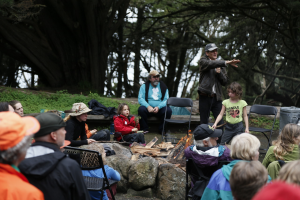
Jon Young sharing stories at a Presidio bird language event. Photo by James Cacciatore.
We also later brought Jon in again to offer a training just for a parents, so that they could experience the depth of connection-based mentoring. This helped our parents to understand the deeper value of outdoor exploration and mentoring, which added another crucial layer of support and enthusiasm for the children’s’ nature connection journey.
Josh: What are some ways that you began sharing these connection processes with your students?
Michelle: We start at first in the classroom by sharing stories about nature. Children will get very excited and interested in a topic through a story; we take longer tales that are usually meant for older children and paraphrase them, and use this to create context for their nature connection journey. Stories provide powerful role models, and they build curiosity around a topic which will lead to deeper exploration.
Each age group has different needs, both for building context, and also when in the field. We first have a group get used to going out and exploring the forest together. We build a routine around this each week over a couple of months. We also provide opportunities to look in field guides together in the classroom, and we weave nature into our gratitude practice when we start or finish the day.
We might start with a 30 second or 1 minute period of observation, asking “Notice what you see when you first sit down” and then “Close your eyes… what do you hear?”
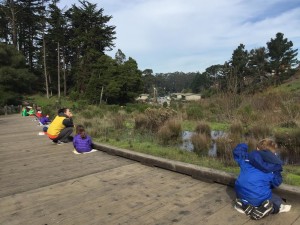
A bird sit in action.
As we begin introducing bird language, we’ll split into teacher or helper-led small groups. Each group will adopt its own spot to sit and observe the landscape. Our 3-5 year olds sit weekly; bird observation sits at this age are pretty short in duration. We might start with a 30 second or 1 minute period of observation, asking them “Notice what you see when you first sit down” and then “Close your eyes… what do you hear?”
We gradually build towards 3 consecutive observation periods. Like you do for adults at the Bird Language Intensive, we instruct everyone to listen for us making coyote howls to help identify each period of time.
In this case, we’ll say ”Close your eyes and listen when you hear the first coyote howl, and then open them and return to the large group when you hear the second coyote howl.”
Then the groups gather back up and we’ll ask what they noticed. Depending on the time of day, we might also encourage the children to draw in their journals.
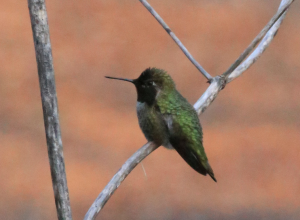
Photo by Jocelyn Knight.
Josh: What kind of response have you noticed from adopting this routine?
Michelle: The kids really love it. They get so fascinated by learning about the birds; they like that they can often see the same birds week after week, and over time they learn all about them. The time in nature really nourishes the children. We’ve actually had parents get upset when their kids graduate, because they’re going to miss their bird language sits.
Josh: What are some field techniques that you especially like for helping younger children tune into the birds?
Michelle: In the field, we use verbal cues to help children focus on experiencing their senses and various natural patterns. We might ask, “Close your eyes… what do you hear right now?”.
Or, we often use a technique called broadcasting, in which we speak to what we perceive the child might be noticing in that moment, which helps them put language onto their experiences. For instance, we might say “Oh, are you seeing that hummingbird perched on the branch? wow, there’s so many colors on the feathers in the sunlight. What do you notice about the hummingbird? What do you think about that?”
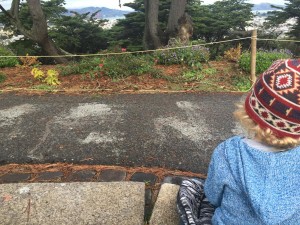 This role modeling of observation skills helps build specific connections over time, which builds relationship with that bird and that place. After doing this in the same place week, the children have had many quality interactions with that hummingbird, and with that tree the hummingbird perches on.
This role modeling of observation skills helps build specific connections over time, which builds relationship with that bird and that place. After doing this in the same place week, the children have had many quality interactions with that hummingbird, and with that tree the hummingbird perches on.
Josh: Are there any resources you recommend for others looking to do this?
Michelle: For educators, definitely Coyote’s Guide to Connecting with Nature. We use a number of activities from that book, and our staff often relies on it. Coyote’s Guide is the best resource any educator can have! We also love David Sobel’s Design Principles for Educators. Richard Louv’s books, including Last Child in the Woods, and The Nature Principle, are essential.
For the children, we love to paraphrase and re-tell stories like My Side of the Mountain. Pond, by Jim LaMarche, is an excellent story that models respect for nature and the power of how people can positively nurture the earth. Elsa Beskow’s Children of the Forest is a treat for the imagination. And of course, the children love looking at pictures in just about any field guide.
Don’t underestimate how capable young children are – they are so naturally connected already.
Josh: What are some key things to remember that you’d recommend to others sharing bird language with younger learners?
Michelle: It’s important to develop a consistent routine. By exploring and observing in the same place week after week, children will deeply get to know that place. We had one group that started at age two, and after three years at the same sit spot, they feel so connected there… they know when certain birds nest, they’ve experienced the cycles of life by observing hawks hunting, and they even know the sounds and behaviors of the local birds. The routine helps them to settle in, and to keep building on their connections week by week.
Josh: Thanks so much, Michelle… any closing thoughts you’d like to share?
Michelle: Don’t underestimate how capable young children are – they are so naturally connected already. They move slower than adults, and are closer to the ground, so they tend to notice more. They are amazingly connected, and have a lot to teach us about our own connection ability!
About Michelle Lawton:
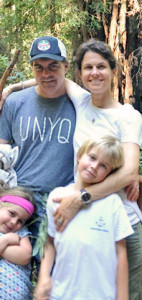 Michelle Lawton founded Stretch the Imagination in 2002 with the intention of creating a program where children are free to explore and are given the time to delve deeply into their experiences. Stretch originally started as a program for art, yoga and music. Over the past 12 years, it has developed into a respected preschool program grounded in nurturing children’s development through creativity, inquiry and connecting to the natural world.
Michelle Lawton founded Stretch the Imagination in 2002 with the intention of creating a program where children are free to explore and are given the time to delve deeply into their experiences. Stretch originally started as a program for art, yoga and music. Over the past 12 years, it has developed into a respected preschool program grounded in nurturing children’s development through creativity, inquiry and connecting to the natural world.
About the Author:
 Josh Lane is an avid wildlife tracker and bird language observer. He contributed to the “How to Learn Bird Language” section of the book, What the Robin Knows, and developed the Backyard Bird Language online course. Josh is a nature connection mentor with 8 Shields, and has presented bird language trainings at events around North America, including the National Audubon Conference and the Occupational Therapy Association of California Conference.
Josh Lane is an avid wildlife tracker and bird language observer. He contributed to the “How to Learn Bird Language” section of the book, What the Robin Knows, and developed the Backyard Bird Language online course. Josh is a nature connection mentor with 8 Shields, and has presented bird language trainings at events around North America, including the National Audubon Conference and the Occupational Therapy Association of California Conference.
